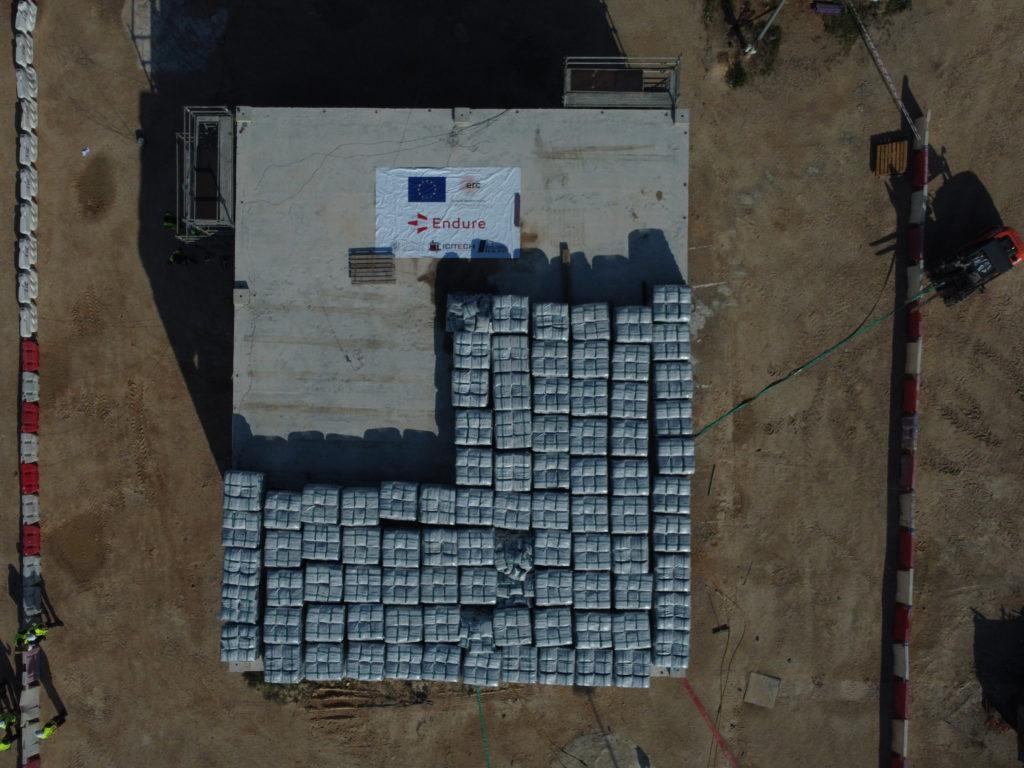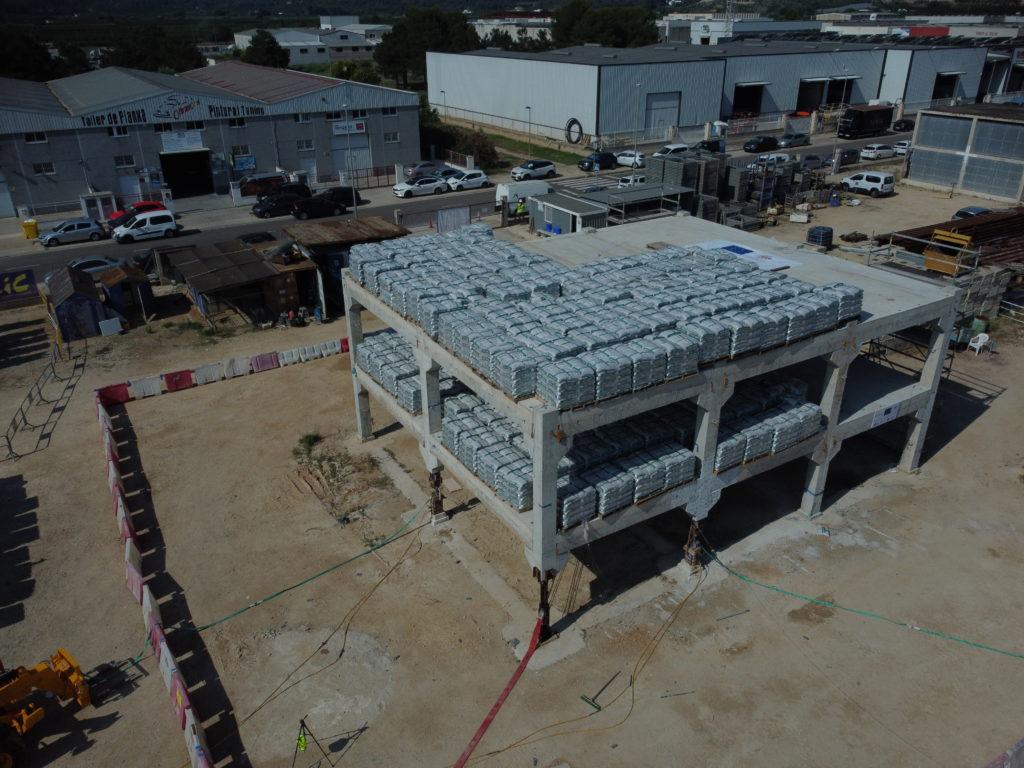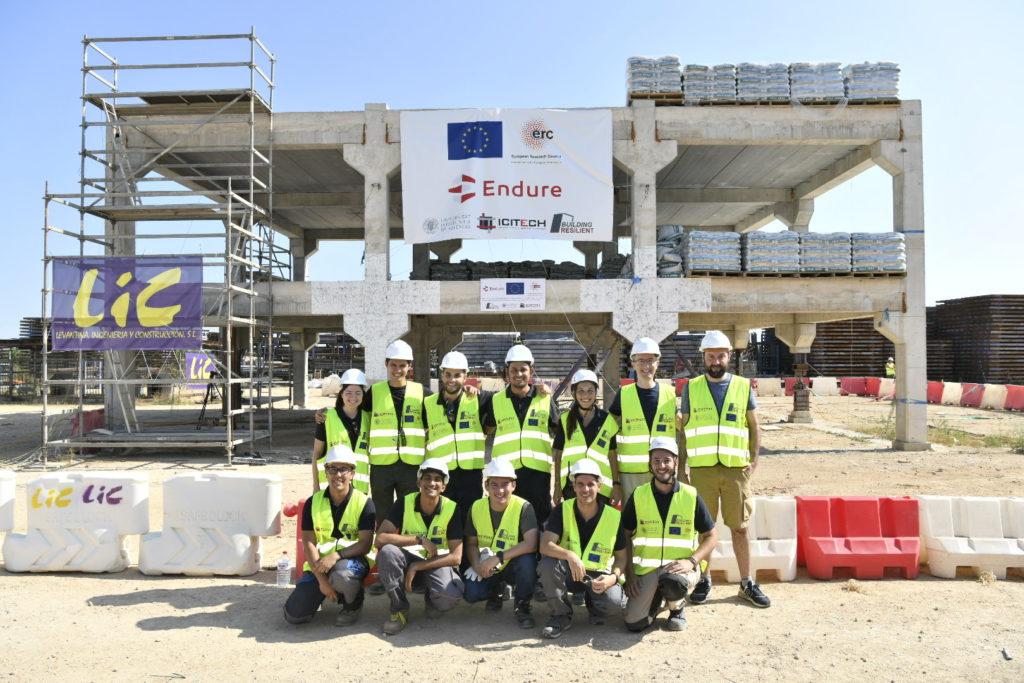During the last months, we have been preparing for one of the most ambitious tests we have done so far at Building Resilient. On June 23rd, we successfully performed a partial collapse test of a precast full-scale building specimen considering an extreme failure event.
In our past projects, we had proven that, with appropriate construction details, precast concrete structures are sufficiently robust to withstand several single-column removal scenarios without collapsing. However, the behavior of such a structure under larger initial failure (triggered by natural disasters, large explosions, structural aging, or other relevant causes) remains unknown.
To better understand the phenomenon, we planned a partial collapse test involving the removal of three columns in two phases: 1) removing the two edge columns in a quasi-static manner followed by; 2) dynamically removing the corner column. The building-specimen was loaded with more than 8,000 sandbags (216 tons), equivalent to a uniform distributed load (UDL) of about 12 kN/m2. A particular procedure was carefully designed to allow removing the “targeted” columns from a safe distance. To monitor the redistribution of internal forces at different stages, the building-specimen was heavily instrumented with 6 cameras, 3 drones, 64 strain gauges, 17 displacement transducers and 5 accelerometers.
Two essential phenomena can be observed from the test. First, the structure remained standing after removing the first two columns. This observation suggests that continuity helps redistribute the excess forces to adjacent members (under small initial disturbances), hence preventing collapses. Second, partial collapse occurs in the second phase (after removing the third column), which turns out to be beneficial in arresting the collapse front. Otherwise, the initial failure will propagate and result in a complete (total) collapse. Therefore, the test revealed that precast construction has a “natural” segmentation capability which protects the remaining (intact) parts of the structures from collapsing.
Thanks to the research carried out in the last years, we have managed, for the first time in the world, to prevent the total collapse of a building at extreme risk of collapse. This experimental campaign is part of the Endure project research, which has received funding from the European Research Council (ERC) under the European Union’s Horizon 2020 research and innovation programme (grant agreement no. 1101000396).
Partial collapse test of a precast concrete structure (slow motion video)




